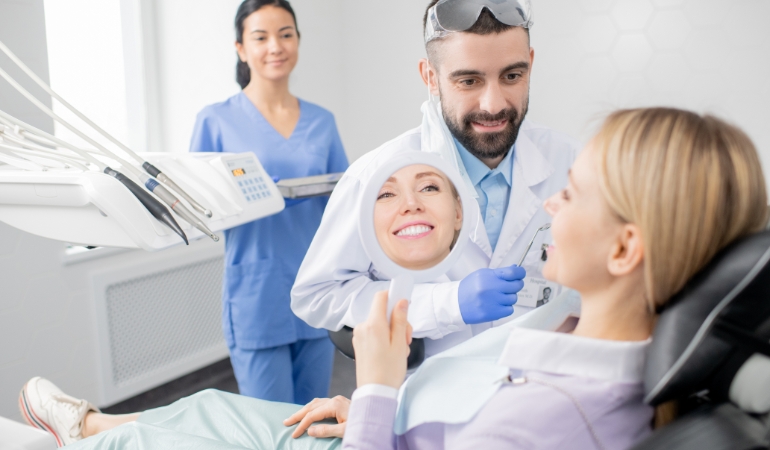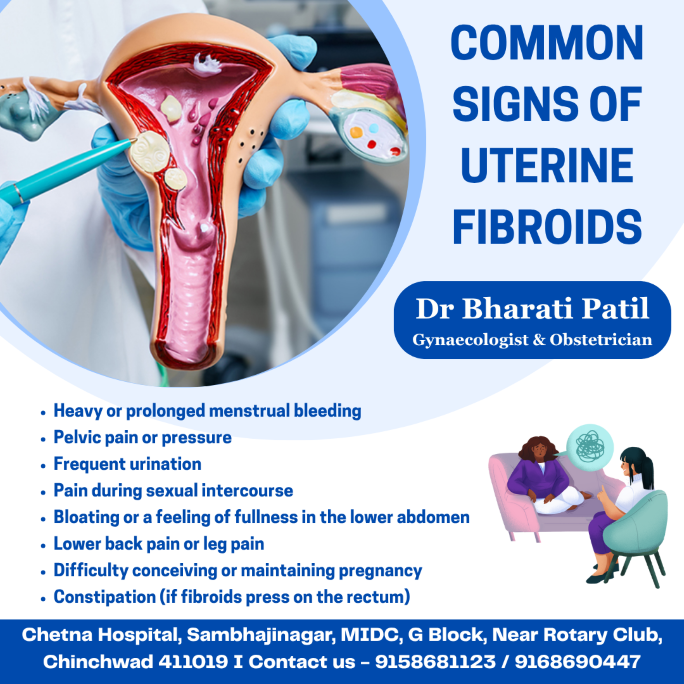Uterine fibroids are non-cancerous growths that develop in or around the uterus. They are also known as leiomyomas or myomas and are made of muscle and fibrous tissue. While they are quite common—especially in women between 30 to 50 years—not all women experience symptoms. However, for some, fibroids can cause significant discomfort and affect daily life and fertility.
Common Signs of Uterine Fibroids
Many women may not realize they have fibroids until they undergo a pelvic exam or ultrasound. Still, some noticeable symptoms include:
- Heavy or Prolonged Menstrual Bleeding: One of the most common signs. Women may need to change sanitary products frequently or notice clots during menstruation.
- Pelvic Pain or Pressure: A persistent feeling of fullness or pain in the lower abdomen.
- Frequent Urination: Fibroids pressing against the bladder can increase the urge to urinate.
- Pain During Intercourse: Depending on the size and location, fibroids may cause discomfort during sexual activity.
- Back or Leg Pain: Large fibroids can press on nerves, leading to referred pain.
- Constipation: Fibroids pressing on the rectum may cause bowel movement issues.
- Enlarged Abdomen: Some fibroids grow large enough to make a woman appear pregnant.
- Difficulty Conceiving or Complications in Pregnancy: Fibroids can affect fertility, implantation, and lead to pregnancy-related complications like miscarriage or preterm labor.
Causes and Risk Factors
The exact cause of fibroids is still unknown, but several factors contribute to their growth:
- Hormones: Estrogen and progesterone seem to stimulate fibroid growth.
- Genetics: A family history of fibroids increases your risk.
- Obesity: Overweight women are more likely to develop fibroids.
- Early Onset of Menstruation: Starting your period at a younger age may slightly increase your risk.
- Diet and Lifestyle: Lack of physical activity and a high red meat diet may play a role.
Diagnosis and Treatment
Fibroids are often detected during a routine pelvic exam. To confirm and assess the size and number, doctors may recommend:
- Ultrasound
- MRI
- Hysteroscopy or Sonohysterography
Treatment depends on the size, number, location of fibroids, and whether the patient wants to preserve fertility. Options include:
- Medications: Hormonal therapies can shrink fibroids and control symptoms.
- Minimally Invasive Procedures: Uterine artery embolization, myomectomy, or radiofrequency ablation.
- Surgery: Hysterectomy is considered when other options fail, especially in women who do not wish to conceive.
When to See a Doctor
If you experience heavy bleeding, pelvic pain, frequent urination, or have trouble conceiving, consult a gynecologist. Early diagnosis can help manage symptoms better and avoid complications.
For Consultation Contact us on 9168690447 / 9158681123
Website –
Address – Chetna Hospital, Sambhajinagar, MIDC, G Block, Near Rotary Club, Chinchwad 411019
.
.
.
#hospital#pune#pcmc#chinchwad#health#healthcare#gynaecologist#femalegynaecologist#gynaecologistappointment#gynac#gynaecologistdoctor#gynaecologisthospital#goodgynaecologist#gynaecologistspecialist.













